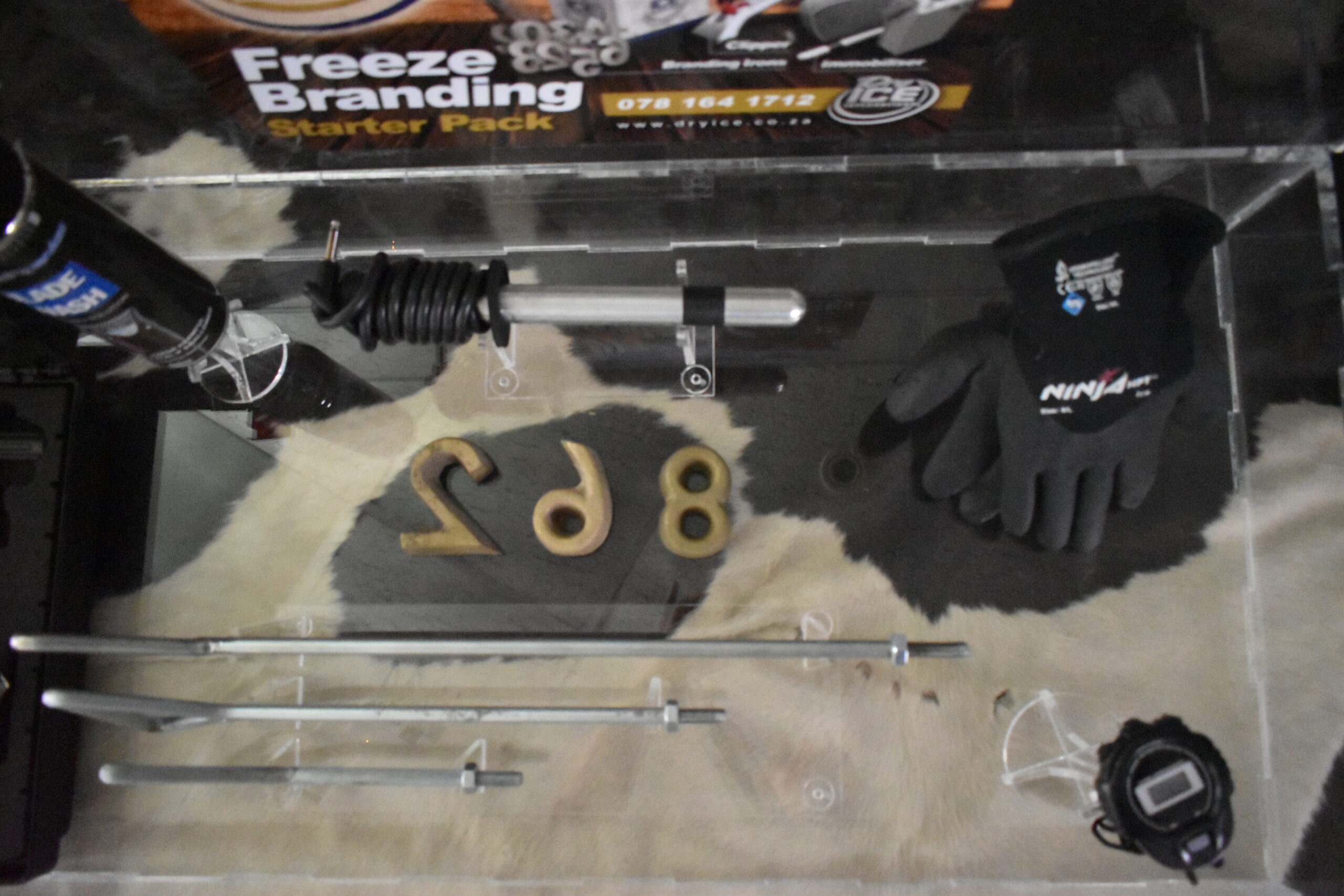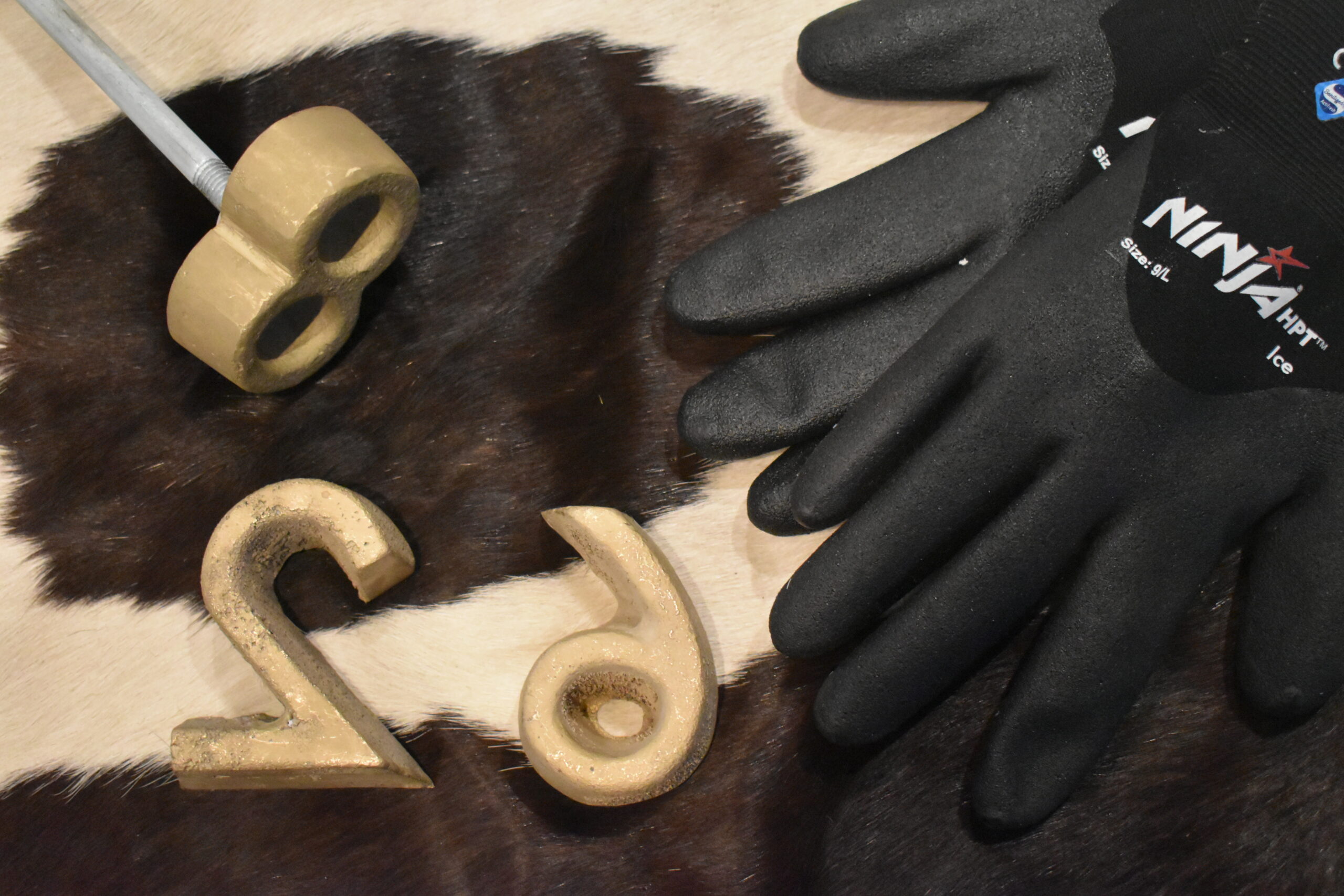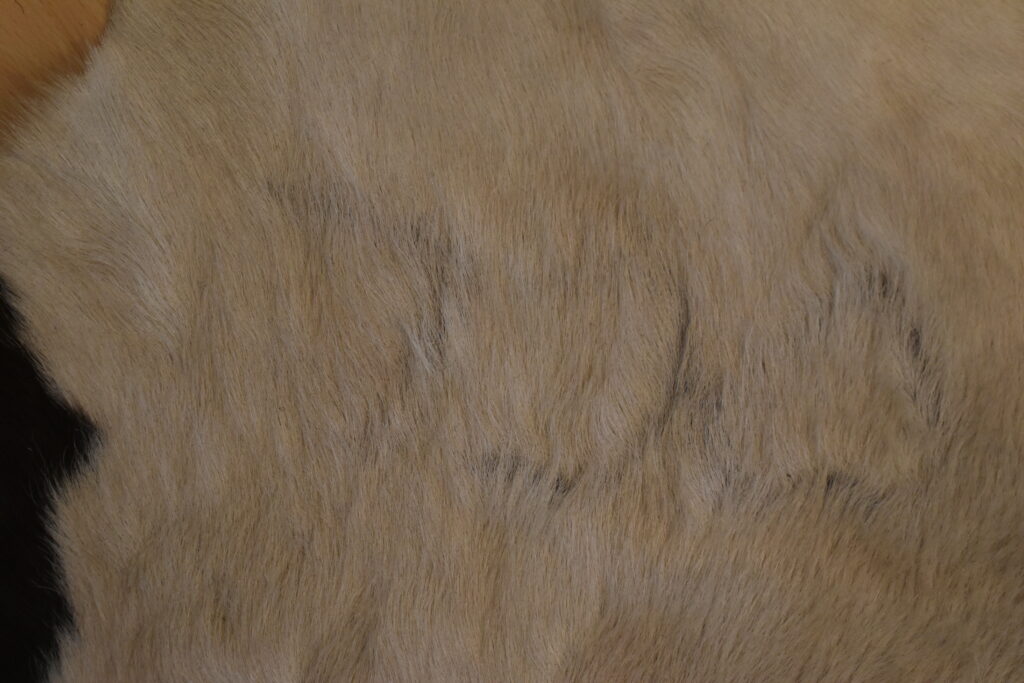Freeze branding is not new, it is a method of identifying cattle that goes back decades. Whether identifying animals is done for legal requirements or simply to make farm management easier, using this cryogenic method has proven to be more reliable and effective than traditional hot branding.
Freeze branding is the practice of using cold instead of heat to make permanent marks on the skin of livestock. The cold penetrates the hair follicle, killing the colour pigmentation. Within 30 to 40 days, the hair grows back colourless (white), almost like going grey with aging. This leaves no open scar or wound.
The method was first developed by Dr Keith Farrell from the USA in 1966. Although the practice is only now gaining attention in agriculture again, it is a method that is easy to use, places the animal under less stress, and it is painless.

The freeze branding kit includes clippers to shave the area that will be branded, branding irons, gloves, a stopwatch, immobiliser, and blade cleaner.
Cynthia Oliver, freeze branding specialist at Dry Ice International, has been with the company for two years, but her journey with them started twelve years ago when she worked with their products. Dry Ice International is the main producer and distributor or freeze branding equipment and agricultural dry ice under the brand name of Dry Ice 4 Farming. Although the company started in 1994, producing and distributing dry ice to the agricultural industry has only gained traction recently.
Cynthia is passionate about farming, Dry Ice International products, and how freeze branding can help farmers.
Freeze branding and how it works
Freeze branding can be done on cattle, horses, and certain species of game. Cattle farmers and horse breeders use branding to mark each animal, where game farmers would use it to identify an animal that is breeding stock and not allowed to be shot by hunters.
The process of freeze branding is painless for the animal, easy for the farmer, and good for the farmer’s patience!

The clippers are available in a variety of sizes and can also be purchased through Dry Ice International.
Just like with heat branding, the farmer guides the cattle or horses into the crush. To begin the process, the area that will be branded is shaved. Next, the area is cleaned with alcohol wipes. This ensures that there is no hair or dirt caught between the iron and the animal’s skin. The cooled iron is then removed from the dry ice mixture and pressed firmly against the skin. To improve the appearance of the mark even further, the person can wiggle the iron to ensure there is firm contact everywhere. This is done for 45 seconds in comparison to hot branding’s 12 seconds. Horses are branded for 35 seconds.
The advantages with freeze branding are:
- The brand is neater.
- The brand lasts for the animal’s entire lifetime, so you do not need to repeat the process yearly.
- The white branded mark is highly visible over a distance.
- The process does not leave an open wound like hot branding, so there is no risk of infection.
One of the challenges that farmers experience with hot branding is that an open wound is also at risk of attracting flies and other parasites. Therefore, branding needs to occur in the colder months when insect activity is low. Freeze branding, on the other hand can be done year-round.
“The benefits for farmers are not only in the process. Other effects are seen in their production. Dairy farmers, for instance, used to notice a drop in milk production for the first few days after hot branding,” Cynthia explains. “Farmers in the tanning business also see benefits,” she adds. “Hot branding burns through the skin and the mark needs to be cut out of the leather afterwards. Some farmers lose up to 30% of the leather in the end.”

Here the number 8 iron can be seen next to the brand on this cattle skin.
Although the entire process – from shaving the animal to removing the iron from the surface of the skin – takes slightly longer than hot branding, it saves a lot of time in the long run. There is no need to rebrand animals next year due to hair that has grown back or over the mark.
Freeze branding solves the problems farmers face with hot branding
Besides being painful to the animal, another big challenge that farmers usually face with hot irons is the stress experienced by the animal. In most cases, animals are immobilised to force them to hold still when the hot irons are pressed against their skin. With freeze branding, however, this is not necessary. Animals are more relaxed and the behaviour of calm cattle that were not immobilised shows this. “The cattle are sometimes more hesitant of frightened by the noise the clipper makes,” Cynthia says. “You can see the animals dislike in the sound, but they quickly realise there is no reason to be on edge, and they relax.”
The other challenge with animal health is the skin that is badly damaged by hot iron brands. “In many cases, the centre of a letter or number can burn through, causing the skin to die and fall off,” she elaborates. “Think of the number 8 or 0. Because it is a fully enclosed circle, the risk of the piece in the middle dying off is bigger. In turn, this of course leaves an undefined scar and a greater risk of infection. It becomes a giant scar that you cannot decipher.”

Freeze branding uses moulded copper branding irons.
Once the branding irons are removed from the animal, it will not show the white brand as expected. But it also does not have any scars. There will be a ridge scabbing that looks like dry skin flaking off. But as the mark heals, the dead skin flakes off and the brand is left smooth without damage to the skin.
Since there is no scar, the scar also does not grow with the calf growing up. Cattle or horses also do not scratch healing scars that can deform or infect the wound.
Obtain freeze branding equipment from Dry Ice International
Aside from the dry ice used for branding, Dry Ice International supplies farmers with a kit for freeze branding that contains everything they will need. This includes clippers to shave the area that will be branded, branding irons, gloves, a stopwatch, immobiliser, and blade cleaner. The clippers and new blades are available in a variety of sizes.
Left: Upper side of a hot brand that has hair grown over it. Can you read the LC♥? Right: The underside of the skin shows the LC♥. Look at how the heat burnt through between the letter C and the heart symbol. This will need to be removed from the skin if this were to be used for leather
Irons can be purchased from them as well. “Freeze branding requires a thicker, copper. The reason for this is that copper is a better conductor for the cold, and a thicker iron ensures that there is enough cold retained in the iron to be effective when placed against the warm skin of the animal,” Cynthia explains. To obtain these irons, the farmer can send the branding certificate or proof of their brand to Dry Ice International.
When using the irons, farmers need to be careful when using the dry ice. Use gloves to prevent yourself from burning your fingers with the cold. It is also advised to use protective goggles to ensure that the isopropyl alcohol and dry ice mixture does not get into your eyes.
Orders can be arranged to be either be picked up at one of the branches in Port Elizabeth, Durban, Cape Town, or Pretoria. Alternatively, they deliver to most major cities. All orders are carefully packaged in polystyrene coolers placed in boxes. When collecting the dry ice yourself, make sure to keep the windows slightly open to avoid build-up of toxic nitrogen gas in the cabin of the vehicle.
For more information, contact Cynthia on cythia@dryice.co.za or WhatsApp her at (+27)78-164-1712. Visit their website at www.dryice.co.za to find your nearest branch.











